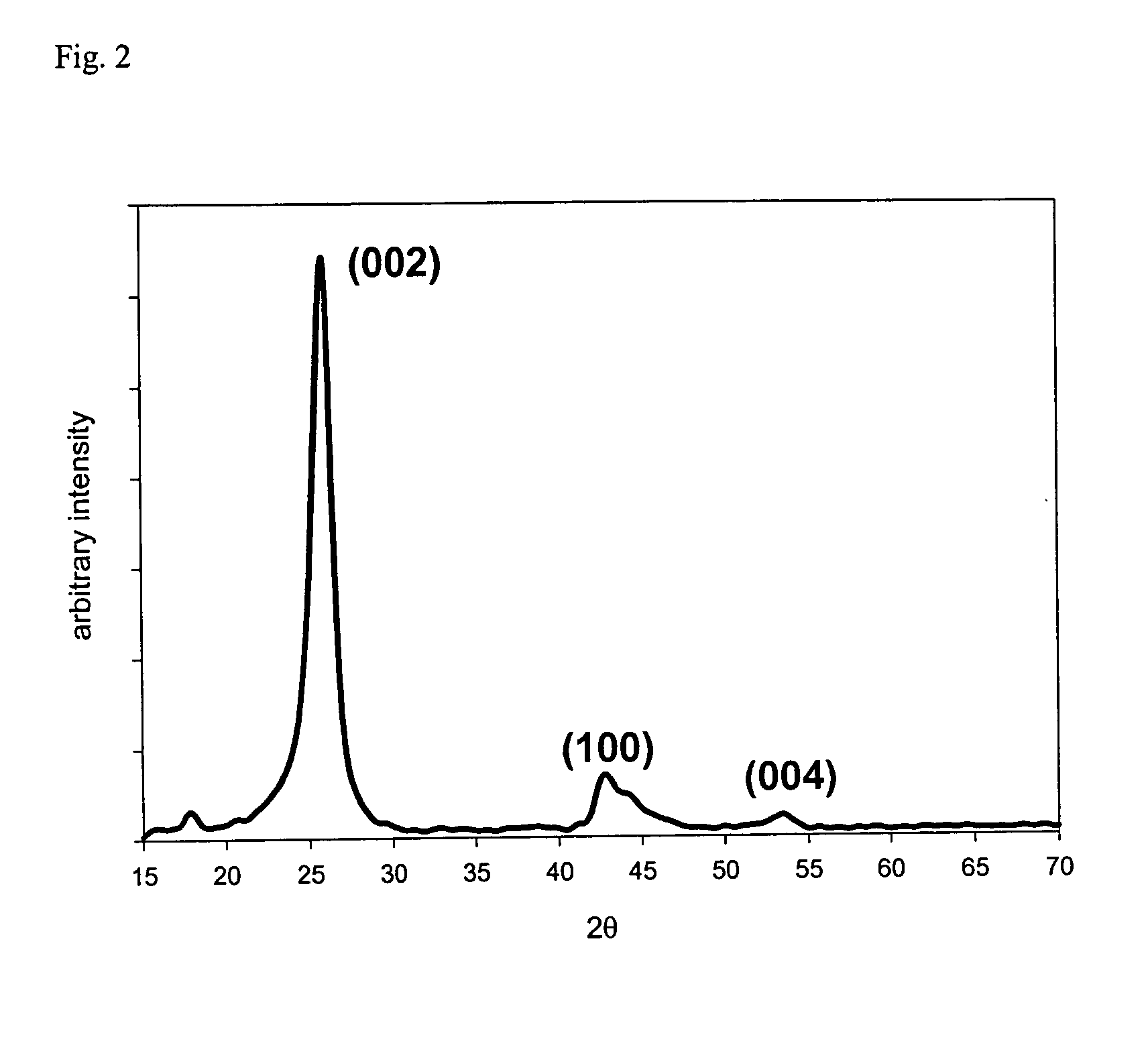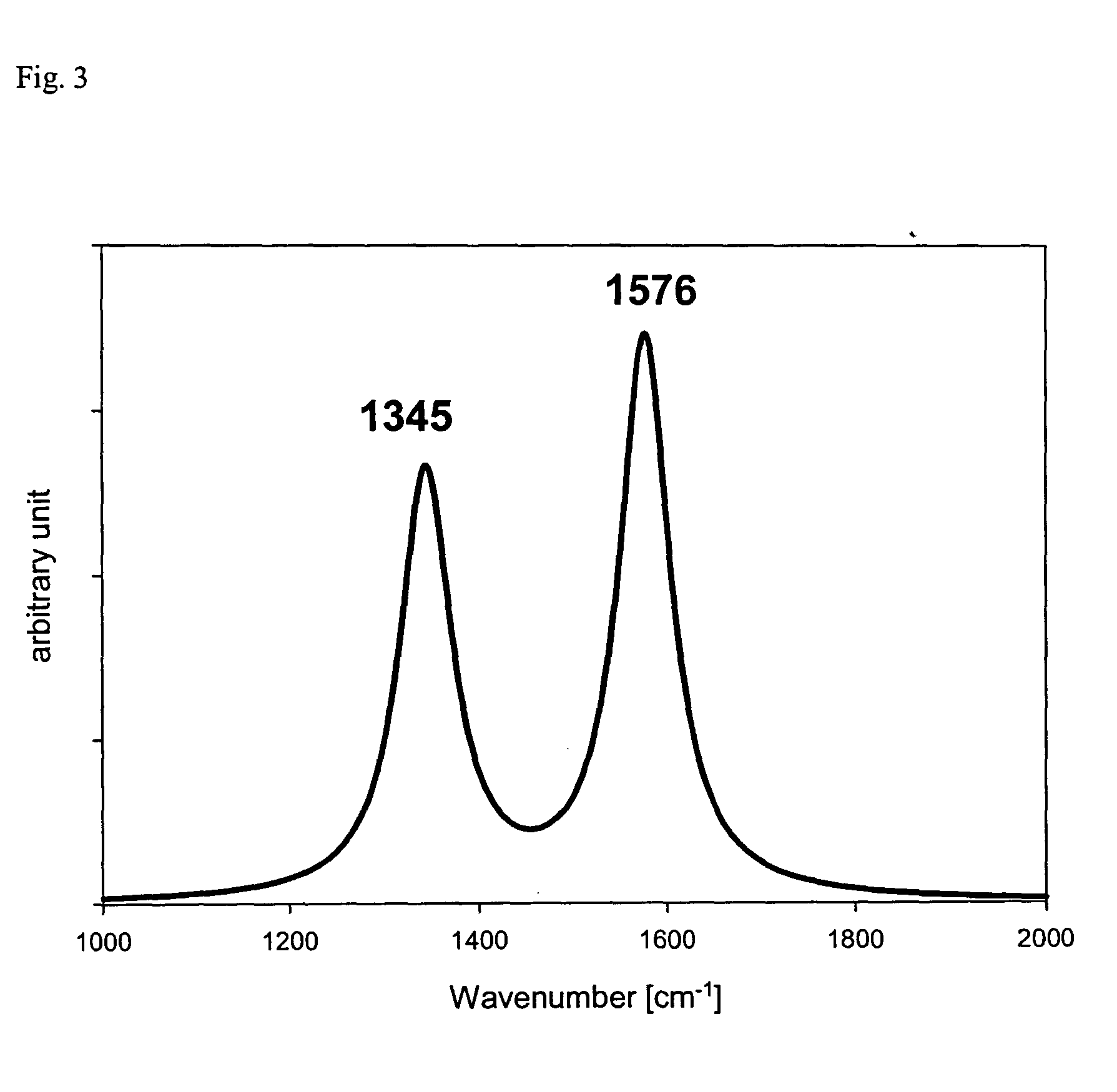Nanostructured carbon materials having excellent crystallinity and large surface area suitable for fuel cell electrodes and method for synthesizing the same
a technology of nanostructured carbon and crystallinity, which is applied in the field of synthesizing nanostructured carbon materials having excellent crystallinity and large surface area, and can solve the problems of low yield, high cost of synthetic nanostructured carbon materials, and limited economic mass production capability of synthetic methods
- Summary
- Abstract
- Description
- Claims
- Application Information
AI Technical Summary
Benefits of technology
Problems solved by technology
Method used
Image
Examples
embodiment
[0041] An aqueous reaction mixture with a molar ratio of H2O:cobalt salt:nickel salt:resorcinol:formaldehyde:silica=100:0.4:0.4:1:2:0.6 is prepared by mixing the constituent materials in 100 mL of deionized water. The resulting reaction mixture is cured at 85° C. for 3 hours in a closed glass vial. For the catalytic graphitization, the composite is heated under a nitrogen atmosphere at 900° C. for 3 hours. The resulting composite is then stirred with 3 M NaOH solution for 3 hours to remove silica particles, and is then refluxed in 2.5 M HNO3 solution for 1 hour to remove metal particles, resulting in forming a nanostructured carbon material. Inductively coupled plasma (ICP) analysis shows that transition metals are successfully removed by the acid treatment.
[0042] An X-ray diffraction (XRD) graph obtained from the resultant nanostructured carbon material is shown in FIG. 2, whereby the XRD graph exhibits that the carbon material is well graphitized with a (002) d-spacing of 3.43 Å,...
PUM
 Login to View More
Login to View More Abstract
Description
Claims
Application Information
 Login to View More
Login to View More - R&D
- Intellectual Property
- Life Sciences
- Materials
- Tech Scout
- Unparalleled Data Quality
- Higher Quality Content
- 60% Fewer Hallucinations
Browse by: Latest US Patents, China's latest patents, Technical Efficacy Thesaurus, Application Domain, Technology Topic, Popular Technical Reports.
© 2025 PatSnap. All rights reserved.Legal|Privacy policy|Modern Slavery Act Transparency Statement|Sitemap|About US| Contact US: help@patsnap.com



